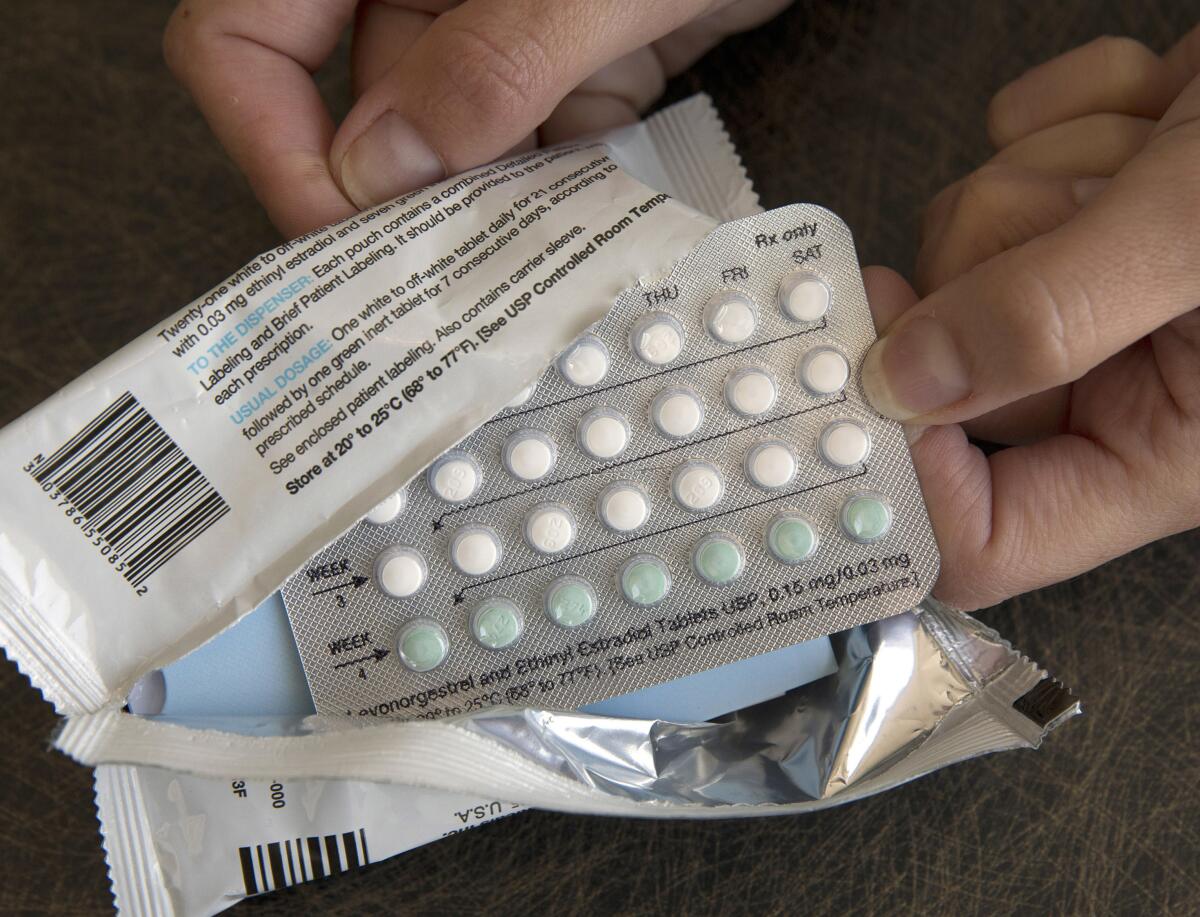Opinion: Gender-affirming care has a long history, though anti-trans laws pretend it’s ‘untested’

- Share via
In 1976, a woman from Roanoke, Va., named Rhoda received a prescription for two drugs: estrogen and progestin. Twelve months later, a local reporter noted Rhoda’s surprisingly soft skin and visible breasts. He wrote that the drugs had made her “so completely female.”
Indeed, that was the point. The University of Virginia Medical Center in nearby Charlottesville had a clinic specifically for women like Rhoda. In fact, doctors there had been prescribing hormones and performing surgeries — what today we would call gender-affirming care — for years.
The founder of that clinic, Dr. Milton Edgerton, had cut his teeth caring for transgender people at Johns Hopkins University in the 1960s. There, he was part of a team that established the nation’s first university-based Gender Identity Clinic in 1966.
When politicians today refer to gender-affirming care as new, “untested” or “experimental,” they ignore the long history of transgender medicine in the United States.
Understanding the history of gender-affirming treatments in the U.S. can be a helpful guide for citizens and legislators in a year when a record number of bills in statehouses target the rights of transgender people.
As a trans woman and a scholar of transgender history, I have spent much of the past decade studying these issues. When I began hormone replacement therapy, I, like many Americans wasn’t aware this treatment had been around for generations. What I was even more surprised to learn was that hormone therapy is often prescribed to cisgender women — women who were assigned female at birth and raised their whole lives as women. In fact, many providers in my region already had a long record of prescribing hormones to cis women, primarily women experiencing menopause.
I also learned that gender-affirming hormone therapies have been prescribed to cisgender youths for generations — despite what contemporary politicians may say. Disability scholar Eli Clare has written of the history and continued practice of prescribing hormones to boys who are “too short” and girls who are “too tall” for what is considered a normal range for their gender. Because of binary gender norms that celebrate height in men and smallness in women, doctors, parents and ethicists have approved the use of hormonal therapies to make children conform to gender stereotypes since at least the 1940s.
The history of these treatments demonstrates that hormone therapies and puberty blockers have been used on cisgender children in this country — for better or for worse — with the goal of regulating the passage from girlhood to womanhood and from boyhood to manhood. Gender stereotypes concerning the presence or absence of secondary sex characteristics — too tall, too short, too much body hair — have all led parents and doctors to perform gender-affirming care on cisgender children.
For over half a century, legal and medical authorities in the U.S. have also approved and administered surgeries and hormone therapies to force the bodies of intersex children to conform to binary gender stereotypes. I myself had genital surgery in infancy to bring my anatomy into alignment with expectations for what a “male” body should look like. In most cases, intersex surgeries are unnecessary for the health or well-being of a child.
Historians such as Jules Gill-Peterson have shown that early advances in transgender medicine in this country are deeply interwoven with the nonconsensual treatment of intersex children. Doctors at Johns Hopkins University and the University of Virginia practiced reconstructing the genitalia of intersex people before applying those same treatments on transgender patients.
Given these intertwined histories, I contend that the current political focus on prohibiting gender-affirming care for transgender people is evidence that opposition to these treatments is not about the safety of any specific medications or procedures, but rather their use specifically by transgender people.
In many states, especially in the South, where I live, governors and legislatures are introducing bills to ban gender-affirming care — even for adults — in ignorance of history. Almost every major medical organization in the U.S. has come out against new government restrictions on gender-affirming care because, as doctors and professionals, they know these treatments are time-tested and safe.
The consequences of hurried legislation extend beyond trans people, because access to hormones and surgeries is a basic medical service many people may need to feel better in their body.
Prohibitions on hormone therapy and gender-related surgeries for minors could mean ending the same treatment options for cisgender children. The legal implications for intersex children may directly clash with proposed legislation in several states that aim to codify “male” and “female” as discrete biological sexes with certain anatomical features.
Prohibitions on hormone replacement therapy for adults could affect access to the same treatments for menopausal women or limit access to hormonal birth control. Prohibitions of gender-affirming surgeries could affect anyone’s ability to access a hysterectomy or a mastectomy. So-called cosmetic surgeries such as breast implants or reductions, and even facial feminization procedures such as lip fillers or Botox, could also come under question.
These are all different types of gender-affirming procedures. Are most Americans willing to live with this level of government intrusion into their bodily autonomy? No one should have to.
G. Samantha Rosenthal is an associate professor of history at Roanoke College. This article was produced in partnership with the Conversation.
More to Read
A cure for the common opinion
Get thought-provoking perspectives with our weekly newsletter.
You may occasionally receive promotional content from the Los Angeles Times.










